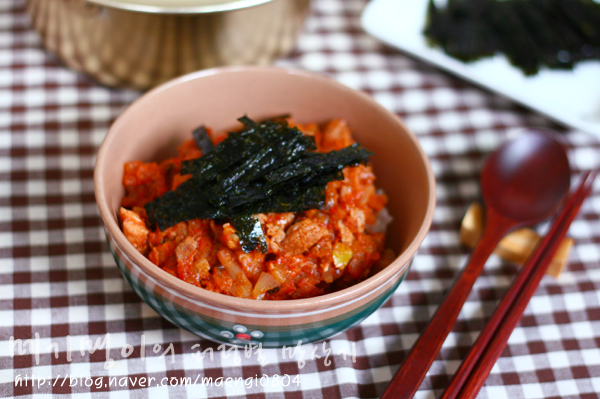
7-minute kimchi jjigae. 5-minute kimchi jjigae rice
It's kimchi stew rice that you eat with spicy kimchi stew in a different way.
3 serving
Within 30 minutes
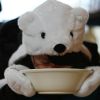
메기맹이
- Ingredients
-
-
ripe kimchi1/4ea
-
Pork200g
-
onion1/2ea
-
leek1/4ea
-
Water3cup
-
Sea tangle1piece
-
Anchovy10ea
-
Kimchi1/2cup
-
Red pepper powder1TS
-
Korean style soy sauce1/2TS
-
crushed garlic1/2TS
-
cooking wine1TS
-
ground pepperlittle
-
- Cooking Steps
-
STEP 1/9Put anchovies and kelp in 3 cups (600ml) of water and when the water boils, take out the kelp and boil the anchovies for another 5 minutes to make water again. It comes from the anchovy's internal organs, so it's better to remove the internal organs and put the head in. If it's soggy, it smells fishy, so it's better to stir-fry it in a dry pan before boiling it. The taste ingredient of kelp is strong water-soluble, so it comes out just by dipping it in water. If you boil it for a long time, it produces sticky alginic acid, which is not bad for your body, but the taste of the soup becomes murky.
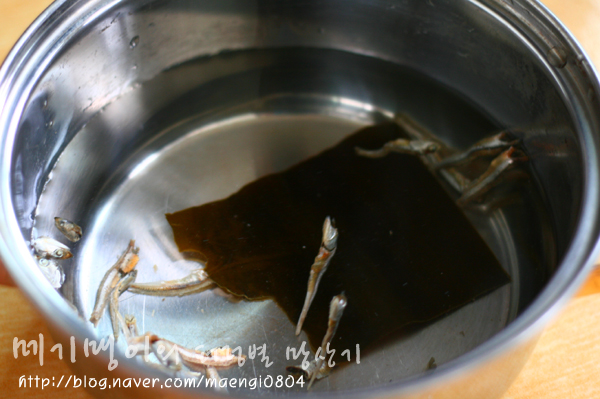 STEP 2/9Mix the amount of seasoning ingredients and mix the pork.
STEP 2/9Mix the amount of seasoning ingredients and mix the pork.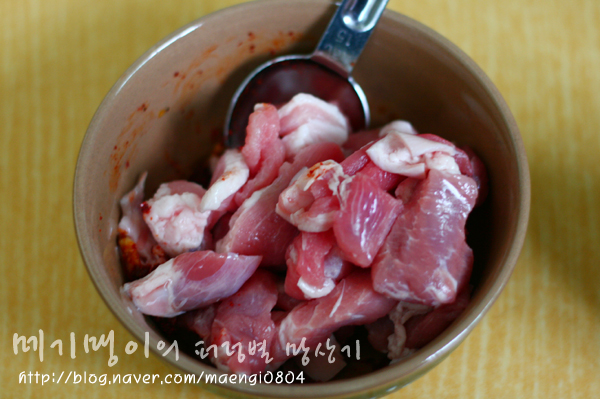 STEP 3/9Grease a heated pan and stir-fry the seasoned pork.
STEP 3/9Grease a heated pan and stir-fry the seasoned pork.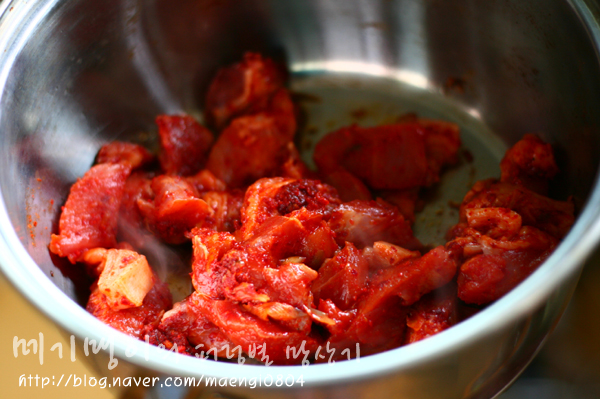 STEP 4/9Grease a heated pan and stir-fry the seasoned pork.
STEP 4/9Grease a heated pan and stir-fry the seasoned pork.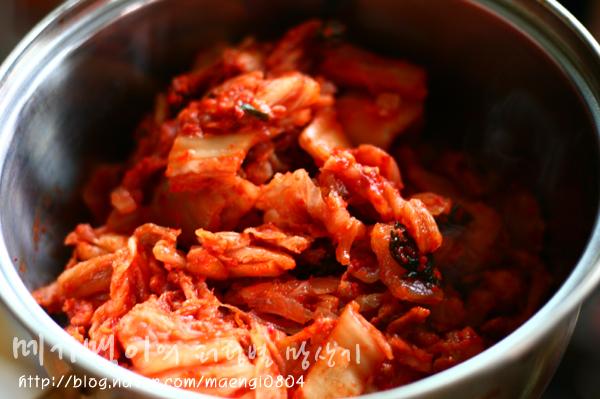 STEP 5/9Add water and kimchi soup again and boil over high heat. Adjust the amount of water because each house has a different seasoning.
STEP 5/9Add water and kimchi soup again and boil over high heat. Adjust the amount of water because each house has a different seasoning.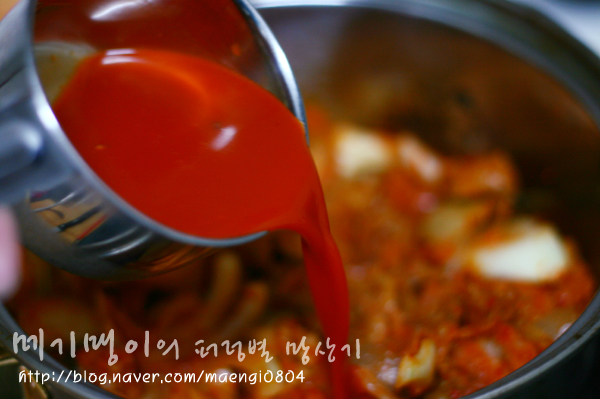 STEP 6/9When the water starts to boil, add the sliced onions and boil it over low heat for about 20 to 30 minutes until the kimchi is fully cooked. When the kimchi is fully cooked, add sliced green onions and boil it slightly. If it is not seasoned enough, season it lightly.
STEP 6/9When the water starts to boil, add the sliced onions and boil it over low heat for about 20 to 30 minutes until the kimchi is fully cooked. When the kimchi is fully cooked, add sliced green onions and boil it slightly. If it is not seasoned enough, season it lightly.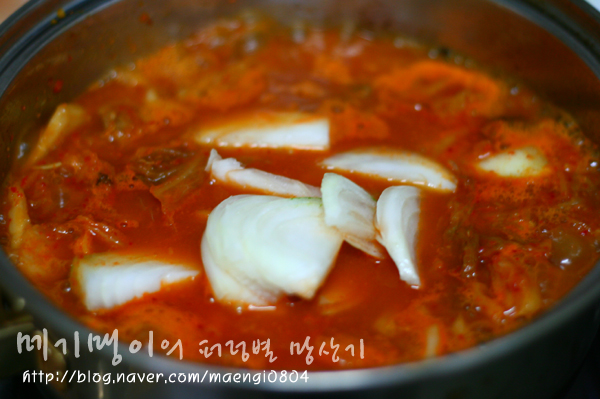 STEP 7/9When it's hot, use scissors to cut.
STEP 7/9When it's hot, use scissors to cut.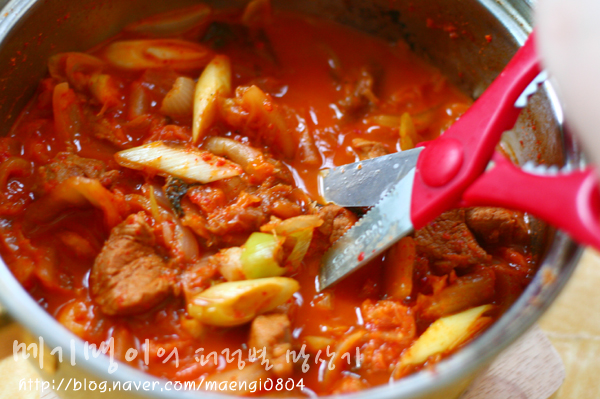 STEP 8/9Cut all the ingredients into small pieces. Prepare the dried seaweed flakes with the finished kimchi stew, rice, and seasoned laver.
STEP 8/9Cut all the ingredients into small pieces. Prepare the dried seaweed flakes with the finished kimchi stew, rice, and seasoned laver.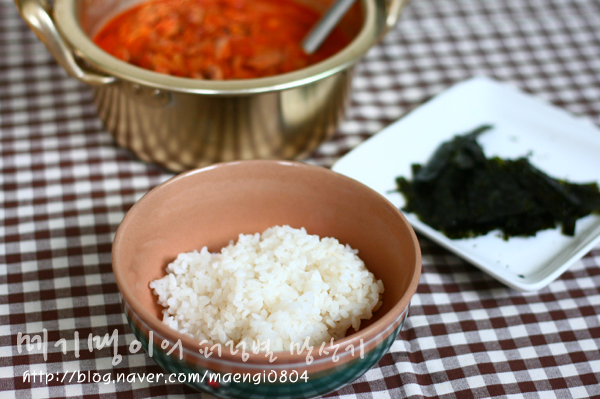 STEP 9/9Put kimchi jjigae on rice and seaweed flakes and mix them.
STEP 9/9Put kimchi jjigae on rice and seaweed flakes and mix them.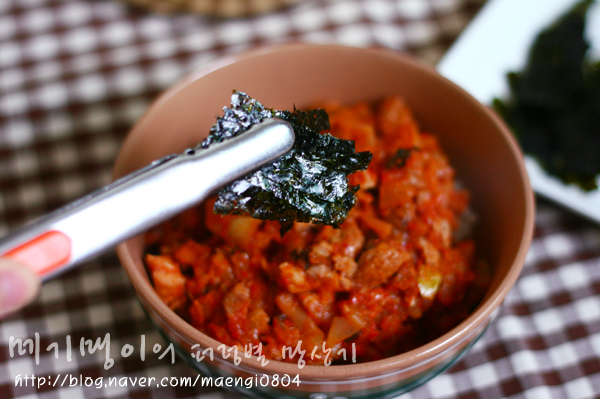
- Kimchi Recommended recipe
-
-
1
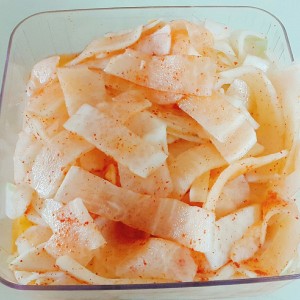 Cold noodles radish kimchi4.79(38)
Cold noodles radish kimchi4.79(38) -
2
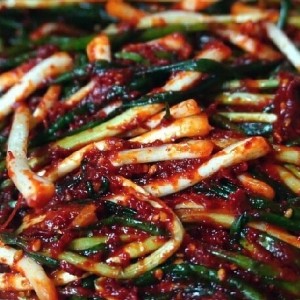 How to make it taste like green onion kimchi, a golden recipe fo4.88(42)
How to make it taste like green onion kimchi, a golden recipe fo4.88(42) -
3
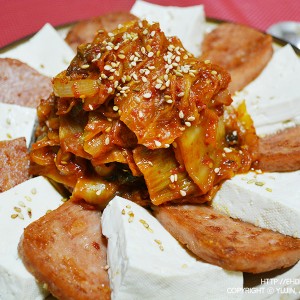 Spam tofu kimchi4.89(107)
Spam tofu kimchi4.89(107) -
4
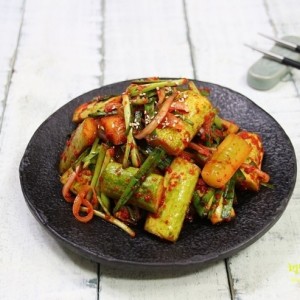 It's nice because it's simple Simple cucumber kimchi4.91(124)
It's nice because it's simple Simple cucumber kimchi4.91(124)
-
- chicken Recommended recipe
-
-
1
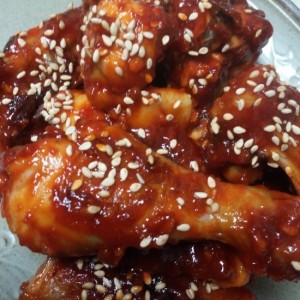 Making Grilled Seasoned Chicken Without Oven4.92(13)
Making Grilled Seasoned Chicken Without Oven4.92(13) -
2
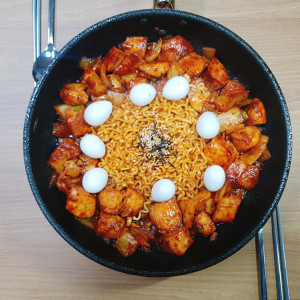 Pickled chicken. Charcoal chicken5.00(9)
Pickled chicken. Charcoal chicken5.00(9) -
3
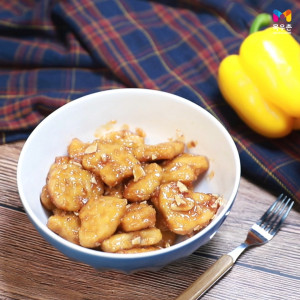 Sweet and salty, sweet and salty chicken! Making Mokwoochon Chic5.00(10)
Sweet and salty, sweet and salty chicken! Making Mokwoochon Chic5.00(10) -
4
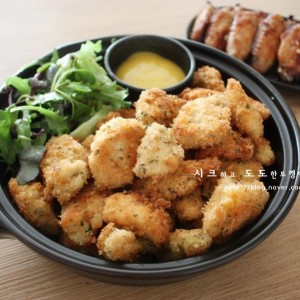 (G)I-DLE's vacation snack - boneless chicken5.00(6)
(G)I-DLE's vacation snack - boneless chicken5.00(6)
-